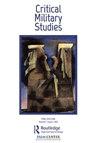暴力如何在战争行动的叙述中消失/出现:一个概念框架
Q1 Arts and Humanities
引用次数: 1
摘要
摘要本文提出了一个批判性研究战争和军事暴力表现的概念框架。从本质上讲,它提供了公共话语中暴力表现的概念化,它结合了内/视觉化、去/自然化和否认的概念。尽管它们在捕捉内容方面重叠和交织,但这三者都被认为与充分阐述暴力如何在类似战争的行动中出现有关。此外,这篇文章通过探讨在积极参与和平执行和进攻性军事行动时,暴力在瑞典公共政治辩论中的表现,举例说明了如何利用这一概念框架。更具体地说,实证说明批判性地审视了1960年至1964年在刚果的联刚行动和2002年至2014年在阿富汗的安援部队的议会辩论。该分析揭示并详细说明了暴力如何作为现实、困境和/或瑞典自己的做法和选择不断消失。目前,学术辩论主要集中在美国或英国。为了加深我们对暴力正常化和成为可能的方式的理解,我们需要完善的概念工具,使我们能够探索各种背景下战争和暴力表现的复杂性和政治工作。本文章由计算机程序翻译,如有差异,请以英文原文为准。
How violence dis/appears in narratives on war-like operations: a conceptual framework
ABSTRACT The present article advances a conceptual framework for the critical study of the representation of war and military violence. Essentially, it offers a conceptualization of dis/appearances of violence in public discourse, which combines the concepts of in/visibilization, de/naturalization, and dis/identification. Though they overlap and interweave in terms of what they capture, all three are considered relevant to fully elaborate how violence may dis/appear in narratives on war-like operations. Furthermore, the article exemplifies how one may make use of the conceptual framework, by exploring the representation of violence in Swedish public political debate at the time of active engagement in peace-enforcement and offensive military operations. More specifically, the empirical illustration critically examines the parliamentary debates on ONUC in Congo 1960–1964 and ISAF in Afghanistan 2002–2014. The analysis reveals and details how violence continuously tends to disappear as a reality, as a dilemma and/or as Sweden’s own practice and choice. At present, the scholarly debate mainly focuses on the US or the UK. To advance our understanding of the ways in which violence is normalized and made possible, we need refined conceptual tools that allow us to explore the complexity and political work of representations of war and violence in various contexts.
求助全文
通过发布文献求助,成功后即可免费获取论文全文。
去求助
来源期刊

Critical Military Studies
Arts and Humanities-History
CiteScore
1.90
自引率
0.00%
发文量
20
期刊介绍:
Critical Military Studies provides a rigorous, innovative platform for interdisciplinary debate on the operation of military power. It encourages the interrogation and destabilization of often taken-for-granted categories related to the military, militarism and militarization. It especially welcomes original thinking on contradictions and tensions central to the ways in which military institutions and military power work, how such tensions are reproduced within different societies and geopolitical arenas, and within and beyond academic discourse. Contributions on experiences of militarization among groups and individuals, and in hitherto underexplored, perhaps even seemingly ‘non-military’ settings are also encouraged. All submitted manuscripts are subject to initial appraisal by the Editor, and, if found suitable for further consideration, to double-blind peer review by independent, anonymous expert referees. The Journal also includes a non-peer reviewed section, Encounters, showcasing multidisciplinary forms of critique such as film and photography, and engaging with policy debates and activism.
 求助内容:
求助内容: 应助结果提醒方式:
应助结果提醒方式:


